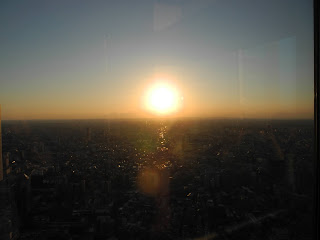After our foray back into the 1970s for the last few Reminiscings of Youth articles especially to celebrate "September", on this last day of September 2020, I want to take things from the post-disco of Earth Wind & Fire circa 1978 to early 1980s New Wave.
Now, should that be New Wave or New Romantic? I always had a bit of a problem distinguishing the two since apparently Duran Duran went from New Romantic to New Wave but on the other hand, Visage was totally New Romantic while Talking Heads was totally New Wave...I think. My initial impression had been that New Wave was about the music while New Romanticism covered the entire spiel: fashion, makeup (lots of it), style and music.
But according to this 2015 answer from Adrienne Dancer, the owner of Los Angeles-based store Beat Bop Boom, New Wave and New Romantic had their own separate styles of music (the link "answer" will take you directly to Quora but I'll also provide it here as well; also take a look at music historian Joshua A. Pfeiffer's reply):
As someone who is a fan of both (and sells related memorabilia and merchandise)...I would consider a band like Flock of Seagulls or Duran Duran to be New Wave...
But a band like Visage or Japan I consider more New Romantic.
(Duran Duran I would say started off New Romantic and transitioned into New Wave.)
Both styles of bands in the 80s would have band members--mostly males--who would wear blousey shirts and make up and would have a heavy synthesizer focus, but I think that the main differences are about the themes of the songs and the sounds of the songs, as well.
I consider New Wave bands' songs more party-danceable. New Romantic bands almost more suited for Goth clubs and for listening in your bedroom kind of music--or the kind of songs you would put on a cassette mix tape for someone that you have a crush on. :)
New Romantic bands song subjects also might focus more on exotic foreign locations, deeper emotions... whereas New Wave songs would be more about having fun or immediate emotions.
Regardless, it was an interesting time to get into music for a callow youth like me with the songs and videos coming at me from both sides of the Pacific and Atlantic Oceans at warp speed. Anyways, feel free to make your comments.
Anyways, before we all end up getting into a seminar about this, let us get straight into this week's ROY article with ABC's "The Look of Love".
I actually saw the video on one of the music video shows...or the last half of it...first before I heard "The Look of Love" on radio, and of course, not being particularly observant, I didn't bother seeing the name of the band or the title of the song. And yet, I was automatically attracted to it. Luckily, it was well on its way to becoming a big hit for ABC so it didn't take too much time to track down the particulars.
Now, looking back at "The Look of Love" on Wikipedia, I saw the genres being listed as synthpop and sophisti-pop, and I kinda did a double take on that first genre. But then, when I saw the video again, I kinda went "Oh, yeah...I can hear the synths and the syn-drums here". It was just that the arrangement was so classy and retro, and I later realized that I always had an interest in the old-style standards. So you had this stylishly retro-New Wave (and yep, I think ABC is New Wave) number with a video of the band and a cast of "thousands" hamming it up on a set that looked like it was supposed to be on some sort of variety show from the 1950s or 1960s, and yep, it grabbed me like the aroma of tenderloin steak on the grill.
"The Look of Love" certainly grabbed my fellow Canadians, too, as it hit No. 1 on the RPM Singles Chart, did pretty well in America by peaking at No. 18 on Billboard's Hot 100, and very well on the UK's OCC Singles Chart by placing in at No. 4.
Well, "The Look of Love" was released on May 7th 1982 in the UK. So, let us go with what was debuting around that time in Japan.
1. May 1st: Akina Nakamori -- Slow Motion (スローモーション)
2. May 1st: Chiemi Manabe -- Nerawareta Shoujo(ねれわれた少女)
3. May 5th: Shibugakitai -- NAI NAI 16





























